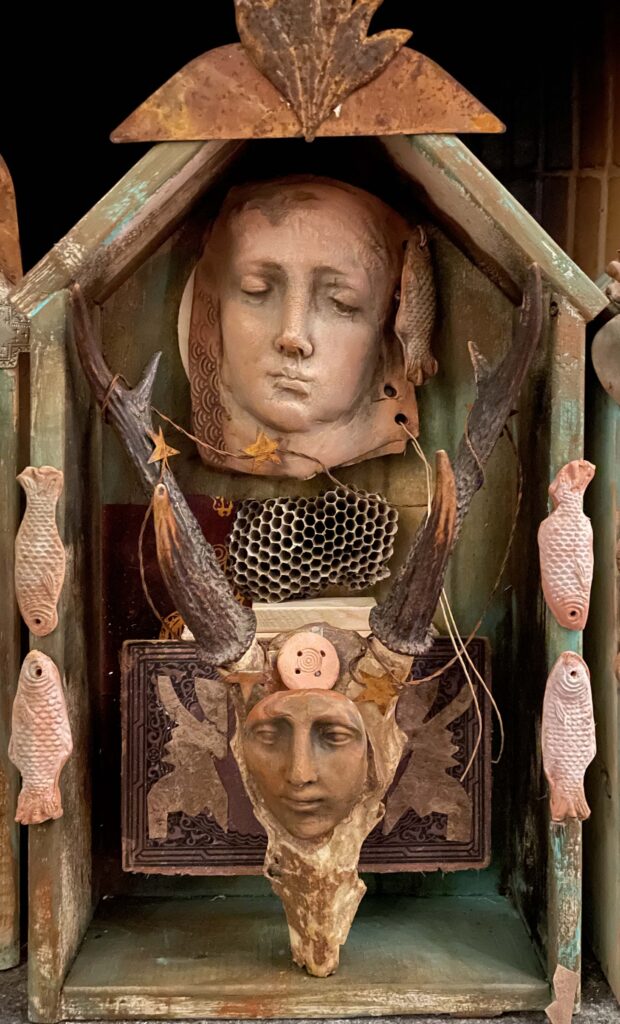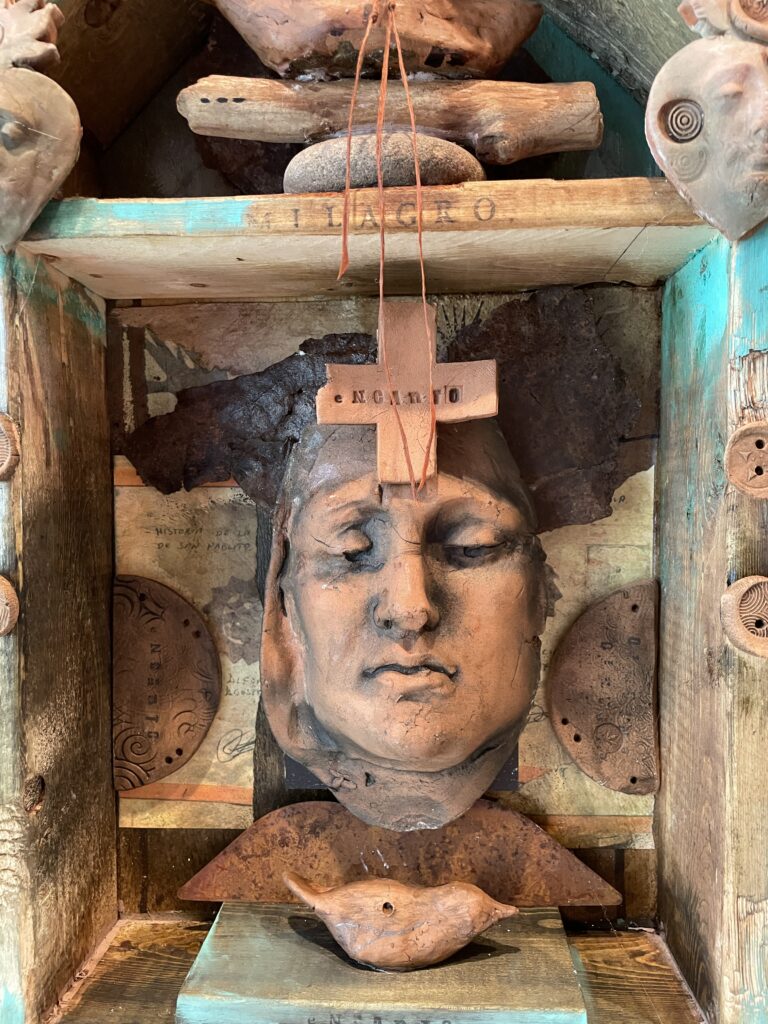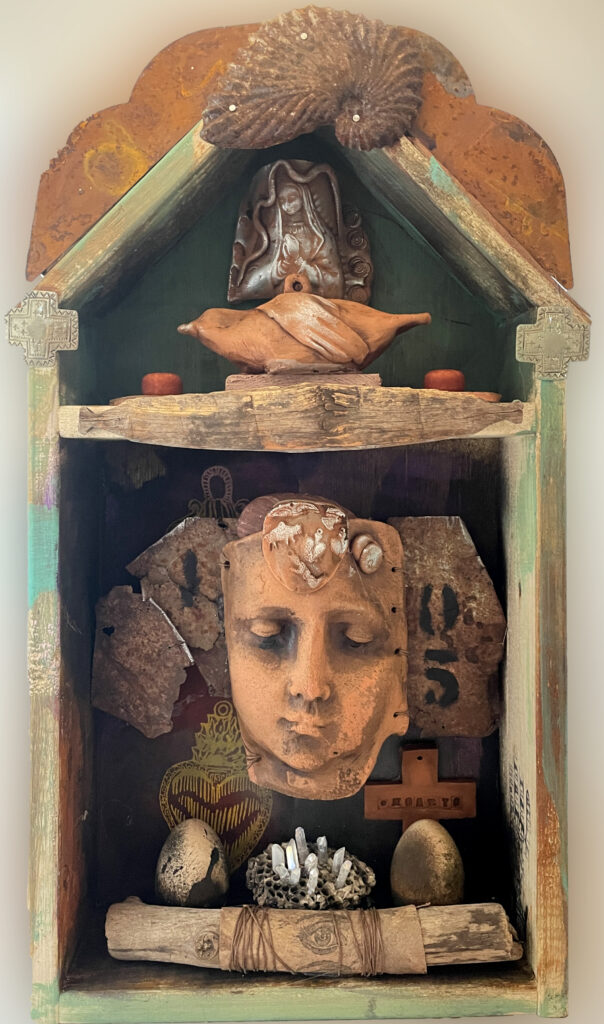Every once in a while, a word drops into my lap and refuses to let go. This week it was enoughness. I first used it when talking with our Enso Circle Continuing Residents about wabi-sabi and the endless challenge of cleaning and organizing a studio.
Here were those observations about the difference between “normal” intent and “wabi-sabi” mindset:
- Striving for order: Every tool in its perfect drawer, every scrap of paper sorted or discarded.
- All-or-nothing mindset: Belief that the studio must be fully “finished” before any new work can happen.
- Stress and guilt: Overwhelm at the clutter, shame for letting it get “out of control.”
- Time sink: Hours (or days) spent chasing an idealized, showroom-ready workspace.
- Enoughness: Accepting that some piles, stains, or chaos are part of a living, creative space.
- Incremental rhythm: Tidying in small, mindful gestures that create breathing room without demanding perfection.
- Compassion for self: Seeing clutter not as failure, but as evidence of energy, exploration, and process.
- Organic order: Letting the studio evolve toward usefulness and comfort, rather than an imposed ideal of spotless control.
Enoughness. Funny word. But the more I sat with it, the more it started to echo through my own art practice.
Enoughness is not about settling. It’s not shrugging and saying, “Well, that’s good enough, I’ll just stop here.” Instead, it’s a sense of completion that comes when a work, a studio, or even a moment feels whole—alive—without needing to be flawless. It’s the place where beauty and imperfection meet.
As I’ve been creating the shard-based assemblages for our upcoming Taos exhibition, I’ve been struck by how the broken pieces seem to carry this truth. A shard of clay, a fragment of a vessel—these are not discarded failures. They are clues. They invite me to listen and to assemble them into a new wholeness that doesn’t erase the breakage but celebrates it.

This assemblage is a conversation in fragments: a face, a hive, antlers, fish, stars. None of these pieces were “whole” when I found them, yet together they created a balance that felt complete. I remember pausing as I worked, holding another small object in my hand, and realizing that if I added more, the story would start to unravel. That moment was enoughness—when the piece declared itself “finished”, not because it was perfect, but because it had found its voice.

Here, the clay face rests beneath the word encanto and a small bird. The cracks and weight in the features carry their own gravity, so when I tried to “fix” the balance with additional adornments, the power of the piece diminished. The bird and the word were all that was needed. Enoughness is sometimes choosing silence over noise.

This assemblage reminds me how enoughness is about honoring the fragments for what they are. Rusted tin, clay shards, a hive filled with crystals—each is incomplete on its own. Together, they form a shrine that feels both fragile and eternal. Enoughness comes when the materials themselves breathe, and I don’t need to push them further.
When I’m working, there’s always the temptation to keep adding more: another layer, another fragment, another mark. But the piece itself tells me when it’s had enough. That moment of recognition—that quiet knowing—is enoughness. To go further would risk dulling the spark. To stop short would leave it unresolved. Enoughness is the balance point, the breath between too much and not enough.
This is where wabi-sabi sneaks in. The Japanese aesthetic of imperfection and impermanence reminds us that cracks and scars are not flaws to hide, but part of the story. Enoughness is wabi-sabi in motion, the living edge where a work becomes whole not despite its fragments, but because of them.
As I gather shards and build these new assemblages, I’m reminded that enoughness is not only about art—it’s about life. A studio doesn’t need to be pristine to be ready. A piece doesn’t need to be perfect to be powerful. And perhaps we don’t need to be flawless to be whole.
So here’s a reflection for you, SHARD readers:
How do you know when your work—your art, your home, your life—has reached enoughness? Not perfect. Not abandoned. But complete in its storytelling.

When a piece of my work stops calling to me, I know it has reached “enoughness”, and it is time to move on.
Wonderful criteria for enoughness!
Yes to this TRUTH…and i so am in love with all of these…but the first one with the antlers calls to my soul…will it be available online when rhe show starts?
Thank you so much! Let me see how it all will work with the Taos people and I will let you know for sure – xoxoxoxo to you, dear friend
Love the word! and the implication!
My life!
Thanks, Kathleen! it really is a weird word but we all get it!
Love, love this. Thanks for sharing.
Oh, Barb – it is always such a gift to hear from you – I know you absolutely understand the concept! ♥
love these creations Lyn… just wonderful
Thanks, Linda – you are such an encourager – ♥
Love this!
I know when something is “done” like I know when something is cooked. I eyeball it, step away for a bit, come back to it, visually taste test, and tune in organically thinking ‘ok, if I don’t stop it’ll become something different that I don’t want’. I sometimes turn it upside down and/or look at it in a mirror to view it differently. I have a sense of knowing calm and leaving it be.
When you have joined an art journey that is forever there, challenges but accepts, gathers you in yet leaves you free to do your own exploring, has guiding teachers but not ones asking for perfection, a group that works from afar yet feels like we are in the same studio. Oh yes the Enso Circle.
Oh, Marian – how good this is! Thank you!!
Lyn, you are an artist, poet, philosopher! I love reading your messages!
LOVE this! Enoughness…my new mantra.
Thanks, Lyn!
I embrace this word “enoughness”. For me it allows less pressure.
Adore this!
Thank you for being you
I know when a piece has reached “enoughness” (love that word!) when I look at it and a smile breaks out inside my body.
Love this!
I know when something is “done” like I know when something is cooked. I eyeball it, step away for a bit, come back to it, visually taste test, and tune in organically thinking ‘ok, if I don’t stop it’ll become something different that I don’t want’. I sometimes turn it upside down and/or look at it in a mirror to view it differently. I have a sense of knowing calm and leaving it be.
Perfection is over rated